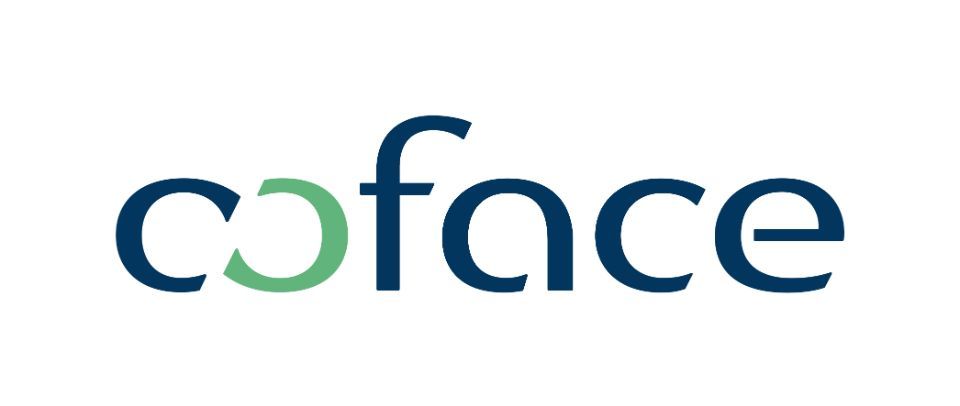Economic consequences of the Russia-Ukraine conflict: Stagflation ahead

The Russia-Ukraine conflict has triggered turmoil in the financial markets, and drastically increased uncertainty about the recovery of the global economy. Since our last publication, the world has shifted, so have the risks.
- Higher commodity prices intensify the threat of long-lasting high inflation which increases the risks of stagflation and social unrest.
- Certain sectors such as automotive, transport or chemicals are more likely to suffer.
- Coface forecasts a deep recession of 7.5% for the Russian economy in 2022 and downgraded Russia’s risk assessment to D (very high).
- European economies are most at risk: at the time of writing, Coface estimates at least 1.5 percentage point of additional inflation in 2022, while GDP growth could be lowered by 1 percentage point. Together with a complete cut of Russian natural gas supply, this could cost at least 4 points of GDP, thereby leading EU GDP growth close to zero – and possibly in negative territory – in 2022.
The conflict threatens to squeeze energy and commodities markets further
Russia is the world’s 3rd oil producer, the 2nd natural gas producer and among the top 5 producers of steel, nickel and aluminum. It is also the largest wheat exporter in the world (almost 20% of global trade). On its side, Ukraine is a key producer of corn (6th largest), wheat (7th), sunflowers (1st), and is amongst the top ten producers for sugar beet, barley, soya and rapeseed.
On the day the invasion began, financial markets around the world fell sharply, and the prices of oil, natural gas, metals and food commodities surged. Following the latest developments, Brent oil prices breached USD 100 per barrel for the first time since 2014 (125$/b at the time of writing), while Europe’s TTF gas prices surged at a record EUR 192 on 4 March.
While high commodity prices were one of the risks already identified as potentially disruptive to the recovery, the escalation of the conflict increases the likelihood that commodity prices will remain higher for much longer. In turn, it intensifies the threat of long-lasting high inflation, thereby increasing the risks of stagflation & social unrest in both advanced & emerging countries.
Automotive, Transport, Chemicals are the most vulnerable sectors
The crisis is obviously strongly impacting an already strained automotive sector due to various shortages and high commodity & raw material prices: metals, semiconductors, cobalt, lithium, magnesium… Ukrainian automotive factories supply major carmakers in Western Europe: some announced the stoppage of factories in Europe while other plants around the world are already planning outages due to chip shortages.
Airlines and maritime freight companies will also suffer from higher fuel prices, airlines being the most at risk. First, fuel is estimated to account for about a third of their total costs. Second, European countries, the US and Canada have forbidden the access to their territories to Russian airlines and in turn, Russia has banned European and Canadian aircrafts from its airspace. This means higher costs since airlines will have to take longer routes. Eventually, airlines have little room for rising costs, as they continue to face lower revenues due to the impact of the pandemic.
Rail freight will also be impacted: European companies are forbidden to do business with Russian Railways which will likely disrupt freight activity between Asia and Europe, transiting though Russia.
We also expect feedstock for petrochemicals to be more expensive, and the soaring prices of natural gas to impact the fertilizer markets, hence the whole agri-food industry.
Deep recession ahead for the Russian economy
The Russian economy will be in great difficulty in 2022, falling into deep recession. Coface’s updated GDP forecast for 2022 stands at -7.5% after the recovery experienced last year. This has lead us to downgrade the country’s risk assessment from B (fairly high) to D (very high).
Sanctions notably targets major Russian banks, the Russian central bank’s, the Russian sovereign debt, selected Russian public officials & oligarchs, and the export control of high-tech components to Russia. These measures put considerable downward pressure on the Russian ruble, which has already plummeted, and will drive a surge in consumer price inflation.
Russia has built up relatively strong financials: a low level of public external debt, a recurrent current account surplus, as well as substantial foreign reserves (app. USD 640 bn). However, the freeze imposed by western depositary countries on the latter prevents the Russian central bank from deploying them and reduces the effectiveness of the Russian response.
The Russian economy could benefit from higher prices for commodities, especially for its energy exports. However, EU countries announced their intention to limit their imports from Russia. In the industrial sector, restricted access to Western-produced semiconductors, computers, telecommunications, automation, and information security equipment will be harmful, given the importance of these inputs in the Russian mining and manufacturing sectors.
European economies are the most at risk
Because of its dependence on Russian oil & natural gas, Europe appears to be the region most exposed to the consequences of this conflict. Replacing all Russian natural gas supply to Europe is impossible in the short to medium run and current price levels will have a significant effect on inflation. At the time of writing, with the barrel of Brent trading above 125$ and natural gas futures suggesting prices durably above 150€/Mwh, Coface estimates at least 1.5 percentage point of additional inflation in 2022 which would erode household consumption and, together with the expected fall in business investment and exports, lower GDP growth by approximately one percentage point.
While Germany, Italy or some countries in the Central and Eastern European region are more dependent on Russian natural gas, the trade interdependence of Eurozone countries suggests a general slowdown.
On top of that, we estimate that a complete cut of Russian natural gas flows to Europe would raise the cost to 4 percentage points in 2022, which would be bring annual GDP growth close to zero, and possibly in negative territory – depending on demand destruction management.
No region will be spared by imported inflation and global trade disruptions
In the rest of the world, the economic consequences will be felt mainly through the rise in commodity prices, which will fuel already existing inflationary pressures. As always when commodity prices soar, net importers of energy & food products will be particularly affected, with the spectre of major supply disruptions in the event of an even greater escalation of the conflict. The drop in demand from Europe will also hamper global trade.
In Asia-Pacific, the impact will be felt almost immediately through higher import prices, particularly in energy prices, with many economies in the region being net energy importers, led by China, Japan, India, South Korea, Taiwan and Thailand.
As North American trade and financial links with Russia and Ukraine are fairly limited, the impact of the conflict will mainly be felt through the price channel and through the slowdown of the European growth. Despite the prospect of slower economic growth and higher inflation, the recent geopolitical events are not expected to derail monetary policy in North America at this stage.














